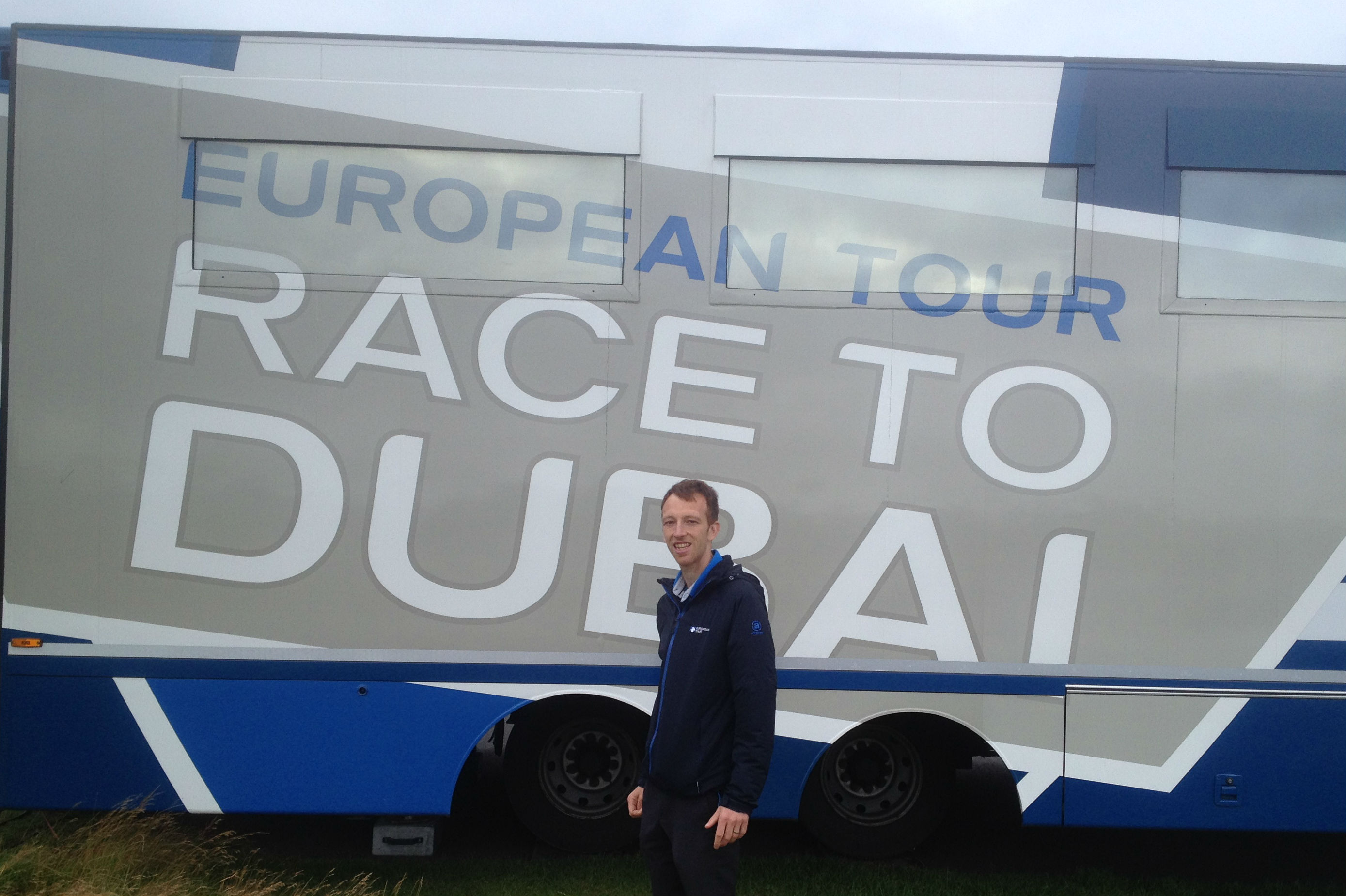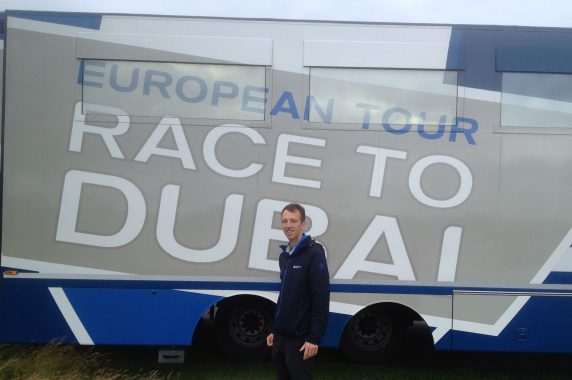Profile: Dr Andrew Murray

Age 36
Role GP and sports and exercise medicine consultant at the University of Edinburgh, European Tour Golf, Scottish Rugby Union, SportScotland Institute of Sport, British Journal of Sports and Exercise Medicine.
Hours worked per week Anywhere between 30 and 65
07.00
I’m on tour with the European Tour golf for the week in Archerfield, Scotland. We provide GP and sports and exercise medicine support to the players, caddies and their respective families. I miss my girls (wife Jennie and one-year-old Nina) when I’m away, but I’ll use the chance to get through a load of work. Over breakfast at the hotel I review a couple articles on concussion and on hamstring injuries for the British Journal of Sports Medicine (BJSM). I also have a brief Skype chat with the editor about podcast and research topics.
07.45
It’s a 30 minute drive to the golf course, so I listen to a podcast from the BJSM (on tendinopathy) – these have over one million listens and I’ll tend to listen to them in the car, or when out running.
08.15
The players are out on the practice range. The doors are open to the custom-built truck housing the medical facilities, which travels with the tour. The tour truck travels all around Europe, with its built-in gym, physio and medical unit. Our space is about the size of a small consultation room, complete with the usual GP kit, a diagnostic ultrasound machine, and resus kit. A gaggle of players come in, many to do some work on the exercise equipment, some to receive physio treatments, and others with familiar complaints to us all such as hayfever and the flu. I spend a bit of time ensuring that the player with hayfever has a solid strategy to prevent and treat future symptoms and a supply of the medications he needs. For the player with flu I make sure he takes things that help alleviate symptoms, but don’t have any anti-doping implications. There is excitement and chatter about the Ryder cup.
09.00
We are doing CPR/ first aid training for the golf caddies for two hours. When I watched golf on TV I didn’t appreciate how hard and how long the hours are for professional caddies. It’s an intense and stressful job. However they get to grips with the training very quickly, and we also discuss topics like vaccinations and tips for adequate sleep, such as scheduling flights appropriately and adjusting time zones prior to travel.
11.00
The players are coming in thick and fast for the next three hours. Some of the common things we see are left wrist and shoulder issues in right-handed golfers. The golf swing involves a lot of repeated force going through precise biomechanical locations, leading to overuse injuries. We see a lot of back injuries and general minor illnesses as well. We have some fancy kit like portable diagnostic ultrasound and I’ll do two or three scans a day when we’re on tour. There are between 40 and 50 tournaments per year base mostly in Europe and Asia, with five doctors covering 8-10 tournaments each. There are 150 players, 150 caddies, and about 50-100 tour staff at each tournament. All of us are dual-qualified in general practice and sports and exercise medicine and some of my colleagues have better language skills than myself, as we look after players from all over the world.
14.15
It’s time for lunch. We eat well on tour, with plenty fresh fruit and vegetables provided. I complement my bananas, spinach and orange with a bacon roll.
14.30
In addition to clinical work, the University of Edinburgh is supporting the tour today by researching spectating experiences, and seeing whether the exercise they get may be good for health. I spend a bit of time data collecting – going through questionnaires and attaching pedometers to spectators. This is in between seeing one of the player’s young child who is wheezy, and a chef that has cut himself and needs a few stitches. Later, we do a brief interview for the BBC about the research.
18.00
It feels like a long day. I catch up with Jennie and Nina on Skype. The golfers have finished playing so I go for a run around the course to see what they are up against. A big hobby of mine is running as it totally relaxes me after work, therefore I decide to spend a couple hours knocking out a few miles. My next race is in Namibia, in the desert during their summer.
20.30
I’m not feeling that social tonight. It’s a shower and room service and then bed.
Pulse October survey
Take our July 2025 survey to potentially win £1.000 worth of tokens












